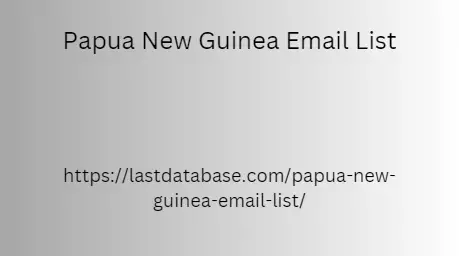Post by huangshi715 on Feb 15, 2024 8:35:09 GMT
You can bet we’ll be taking a second look at our designs and reflecting on the helpful advice provided during the show.” How would your landing page fare if three no-nonsense conversion experts critiqued it? Would it be torn apart or praised? Find out by submitting your page for the next episode of Page Fights, to air on August 8 with special guest judge Joanna Wiebe of Copy Hackers. In the meantime, it’s time to fess up: Let me know in the comments.Gestalt psychology describes this phenomenon in the Law of Prägnanz. So how can you leverage our love of simplicity to increase email sign-ups? Derek Halpern experimented with this law by testing three different variations of his sign-up form.
During the 2008 presidential campaign, Obama’s team wanted to build Papua New Guinea Email List a large email list because they figured subscribers were more likely to volunteer, donate, vote and otherwise support the campaign. obama-variation-a This is what the original form looked like. Image source. To get more email leads, they used A/B testing to measure the effects of 24 different landing page designs. Using multivariate tests (meaning they changed multiple elements), the Obama For America team tested variants of both the sign-up button and the media hero shot. obama-variation-b This winning treatment increased email sign-ups by 40.6%. Image source. The winning variation (pictured above) increased email sign-ups by 40.6%.

Sounds like an impressive number, but what does that actually mean for Obama’s campaign? Over the course of the campaign, that optimized sign-up form resulted in 2.9 million extra email subscribers and $60 million of extra donations. Want more leads? A/B test your opt-in forms. It worked for Obama. CLICK TO TWEET Your opt-in form may have attractive design, but you’ll never know what works best until you test for yourself. Go crazy. Test your calls to action, headlines, imagery and placement. If you need some inspiration, Michael Zipursky has some for you in this post. Keep it simple As humans, we want things that we can understand; the simpler something is, the more comfortable it makes us.
During the 2008 presidential campaign, Obama’s team wanted to build Papua New Guinea Email List a large email list because they figured subscribers were more likely to volunteer, donate, vote and otherwise support the campaign. obama-variation-a This is what the original form looked like. Image source. To get more email leads, they used A/B testing to measure the effects of 24 different landing page designs. Using multivariate tests (meaning they changed multiple elements), the Obama For America team tested variants of both the sign-up button and the media hero shot. obama-variation-b This winning treatment increased email sign-ups by 40.6%. Image source. The winning variation (pictured above) increased email sign-ups by 40.6%.

Sounds like an impressive number, but what does that actually mean for Obama’s campaign? Over the course of the campaign, that optimized sign-up form resulted in 2.9 million extra email subscribers and $60 million of extra donations. Want more leads? A/B test your opt-in forms. It worked for Obama. CLICK TO TWEET Your opt-in form may have attractive design, but you’ll never know what works best until you test for yourself. Go crazy. Test your calls to action, headlines, imagery and placement. If you need some inspiration, Michael Zipursky has some for you in this post. Keep it simple As humans, we want things that we can understand; the simpler something is, the more comfortable it makes us.
